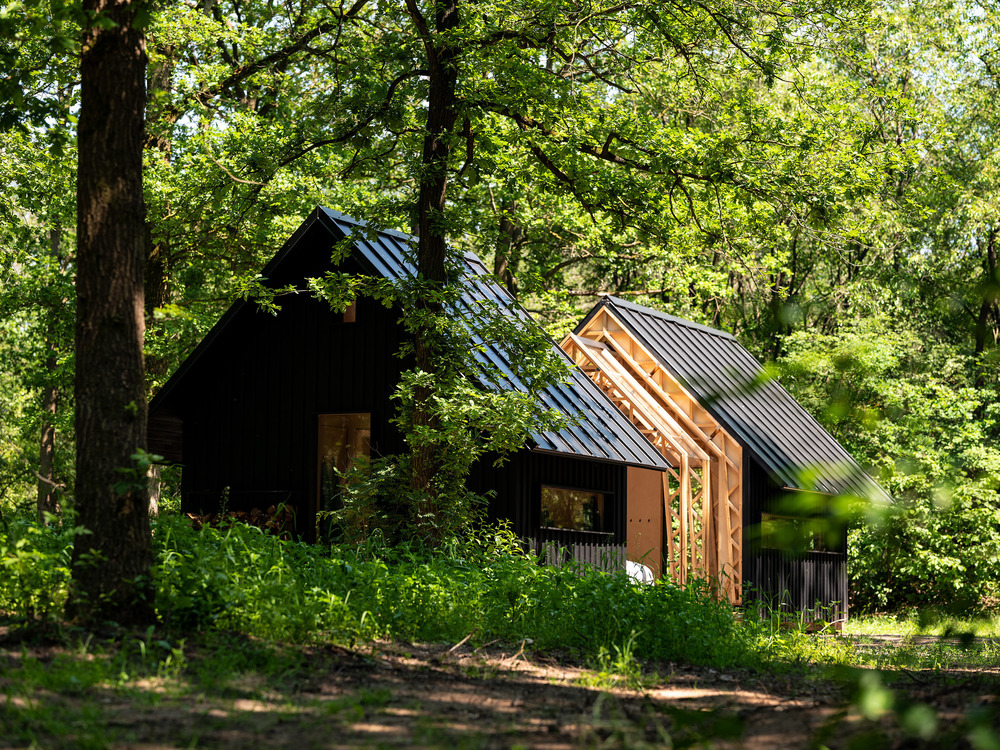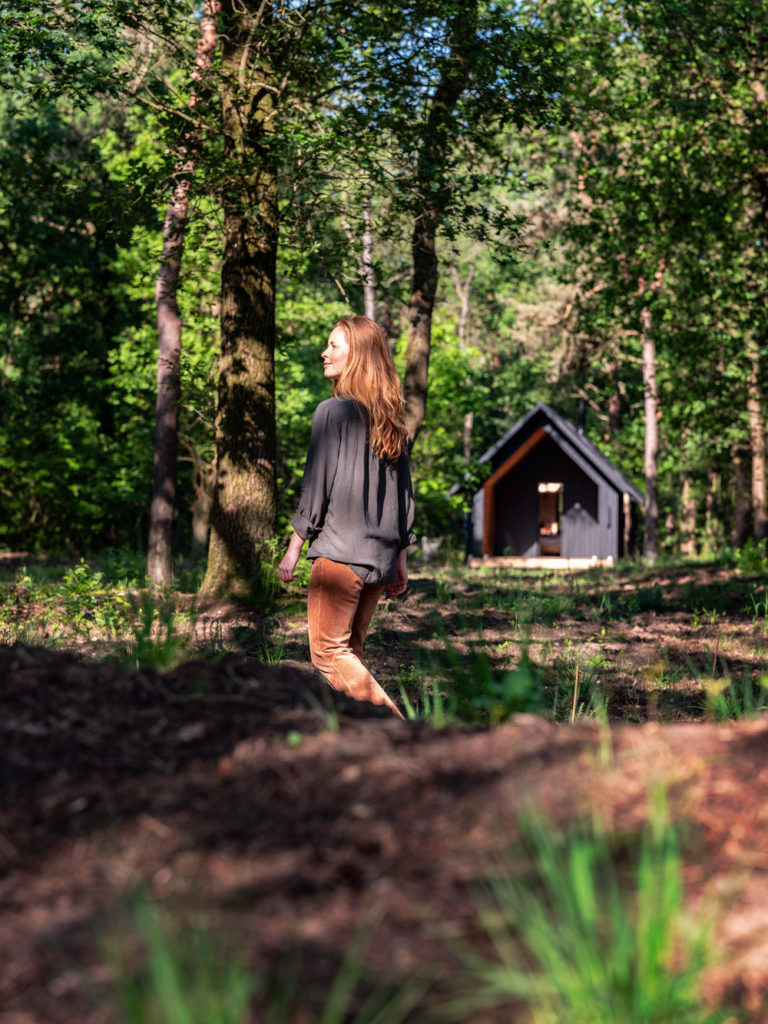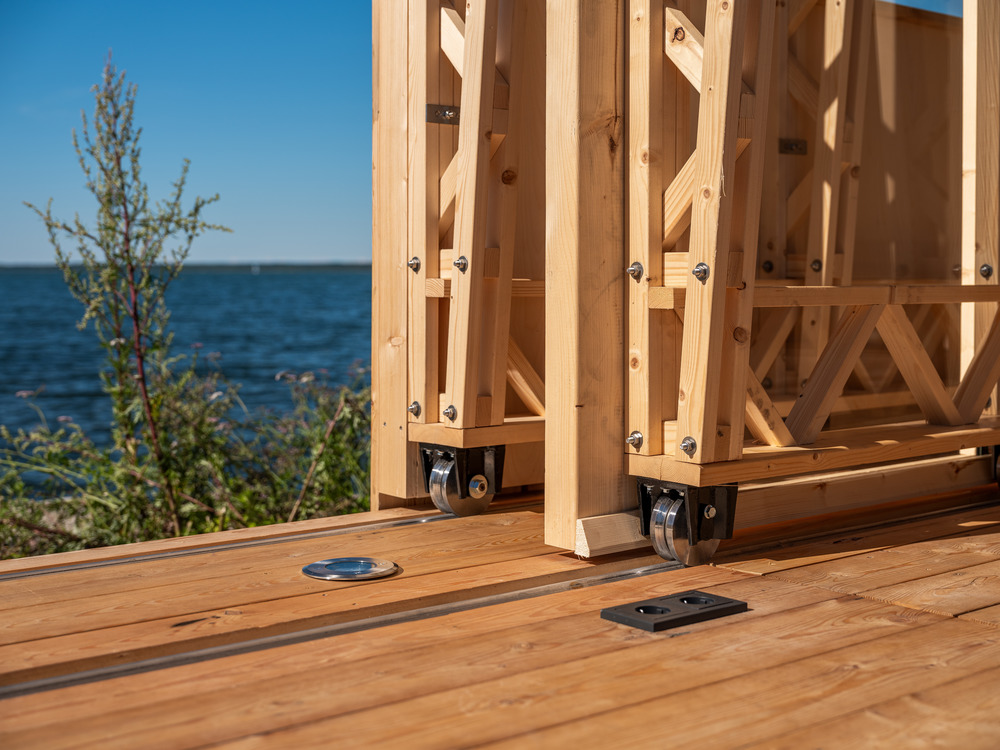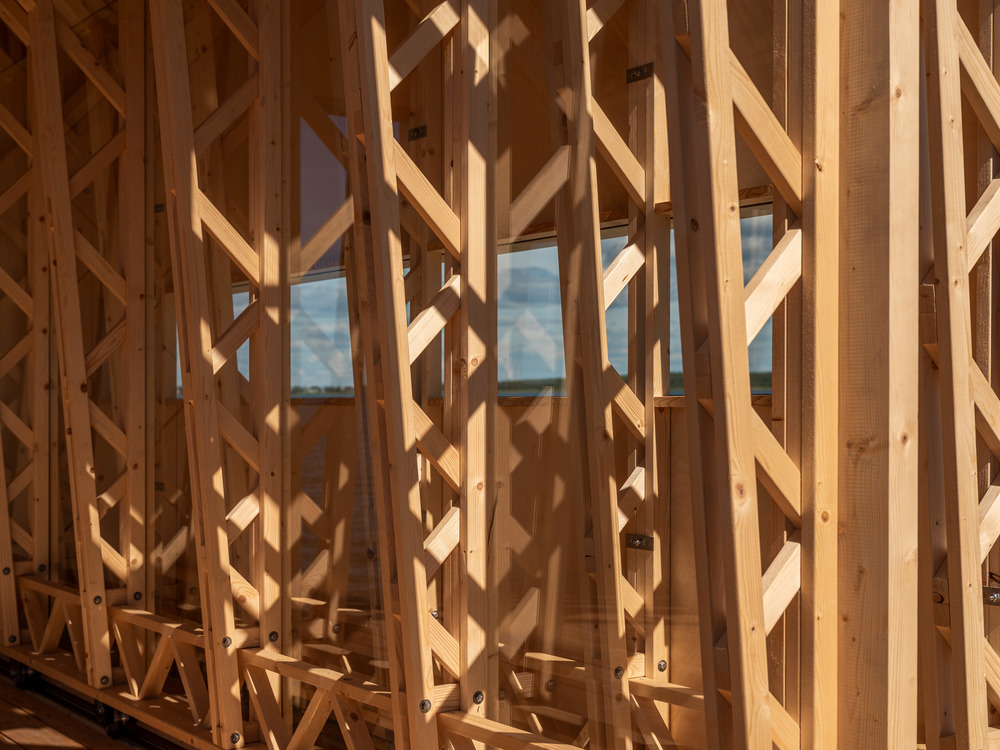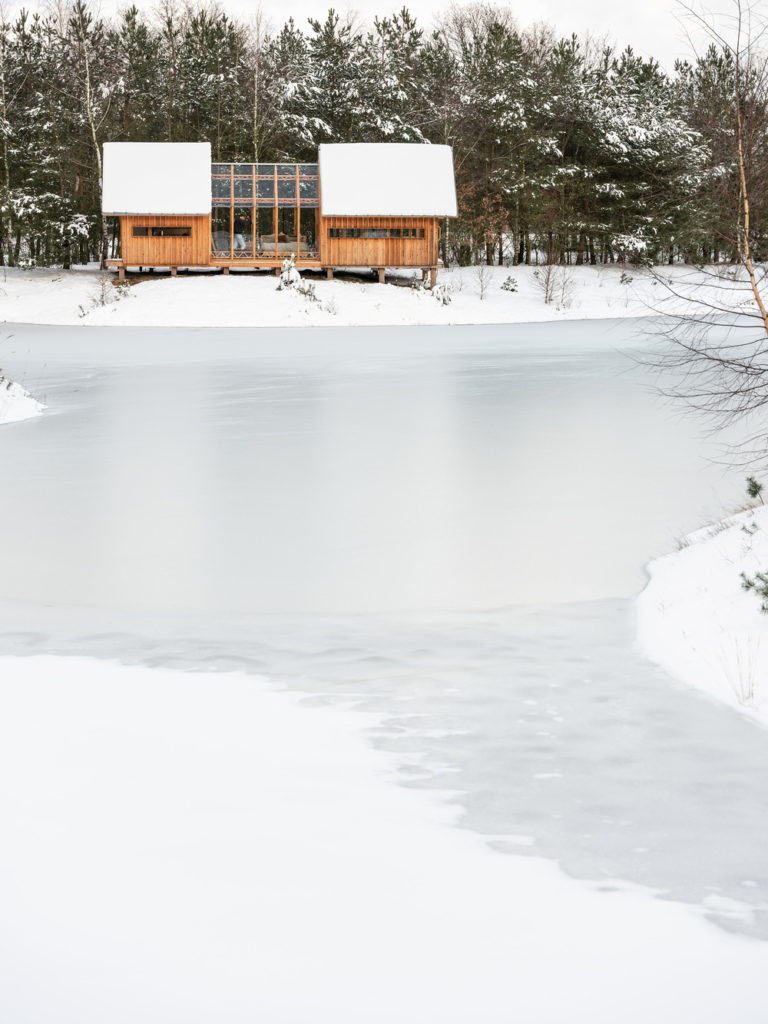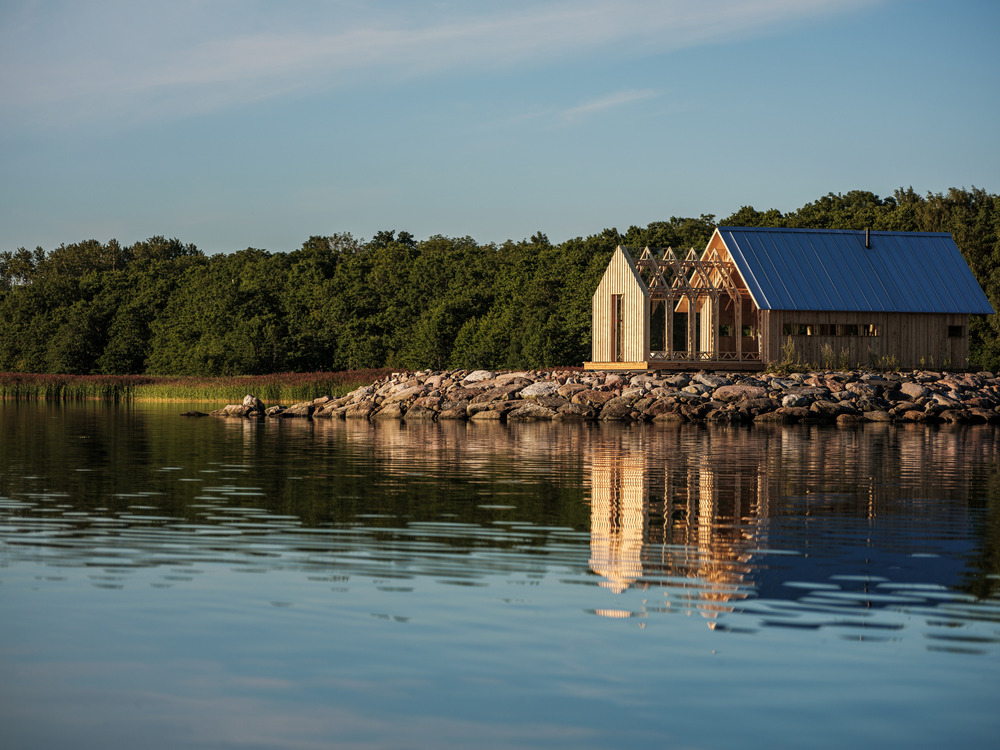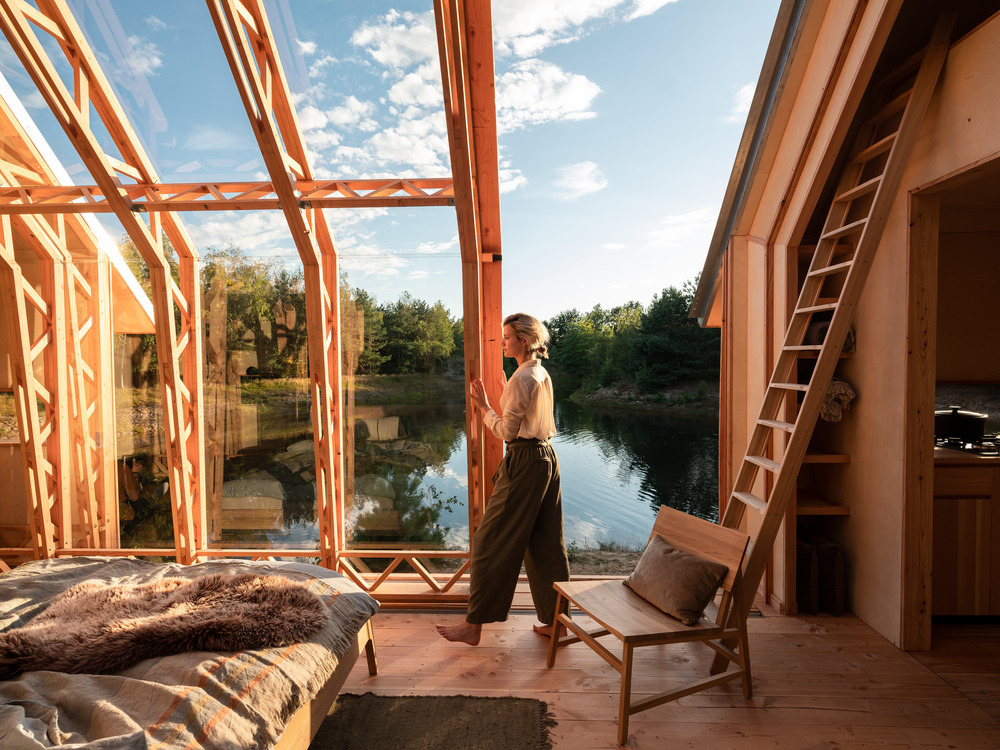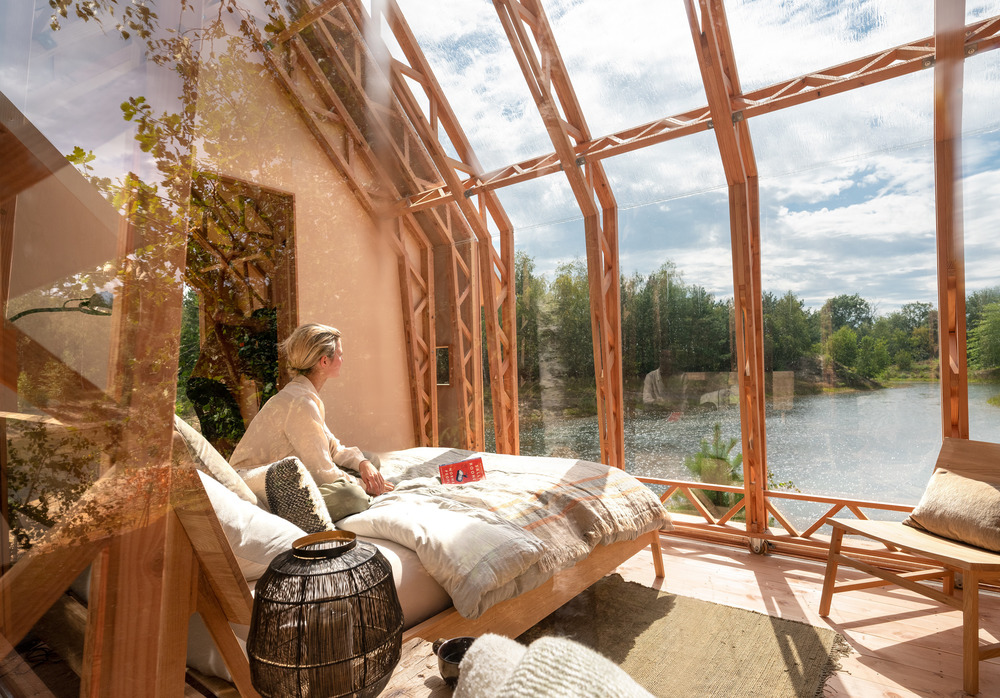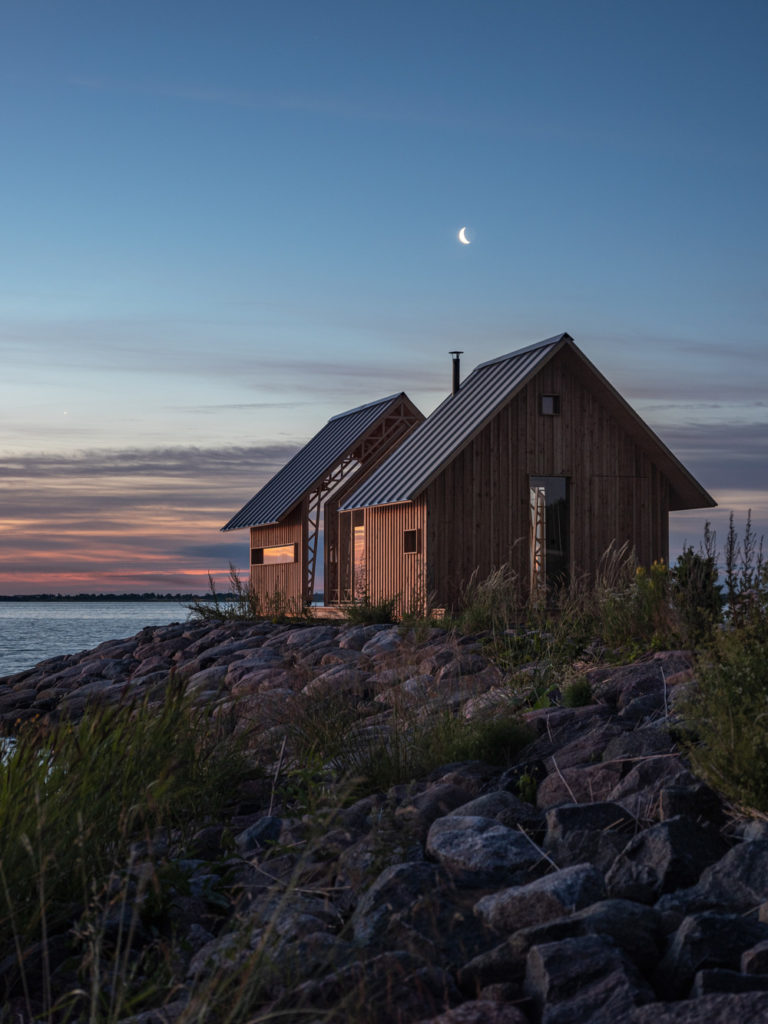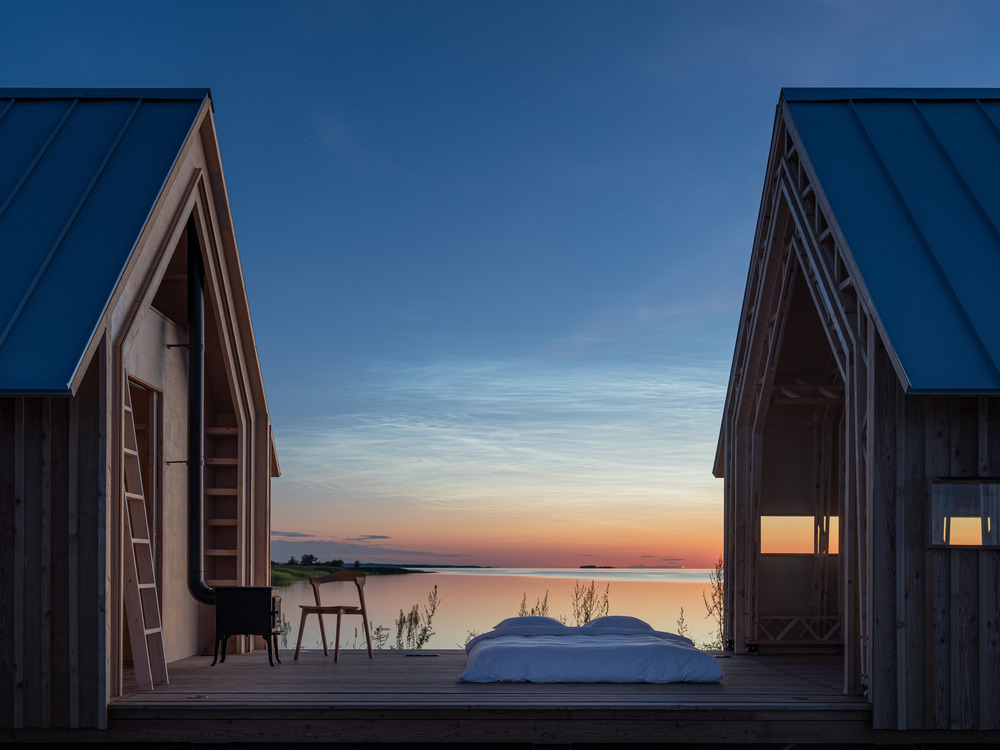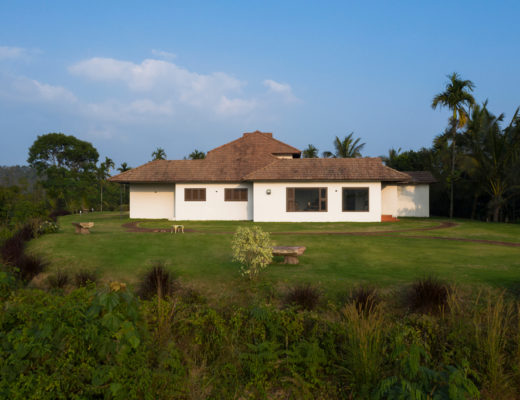ANNA Stay, a versatile wooden cabin created by Dutch designer Caspar Schols, has won several international awards for its small and dynamic living concept. Designed for living within the elements through the configuration of its layers, ANNA Stay is a modular wooden home in the shape of an open platform, enabling adjustments to its wooden exterior and glass interior to adapt to any occasion, mood, or weather condition.
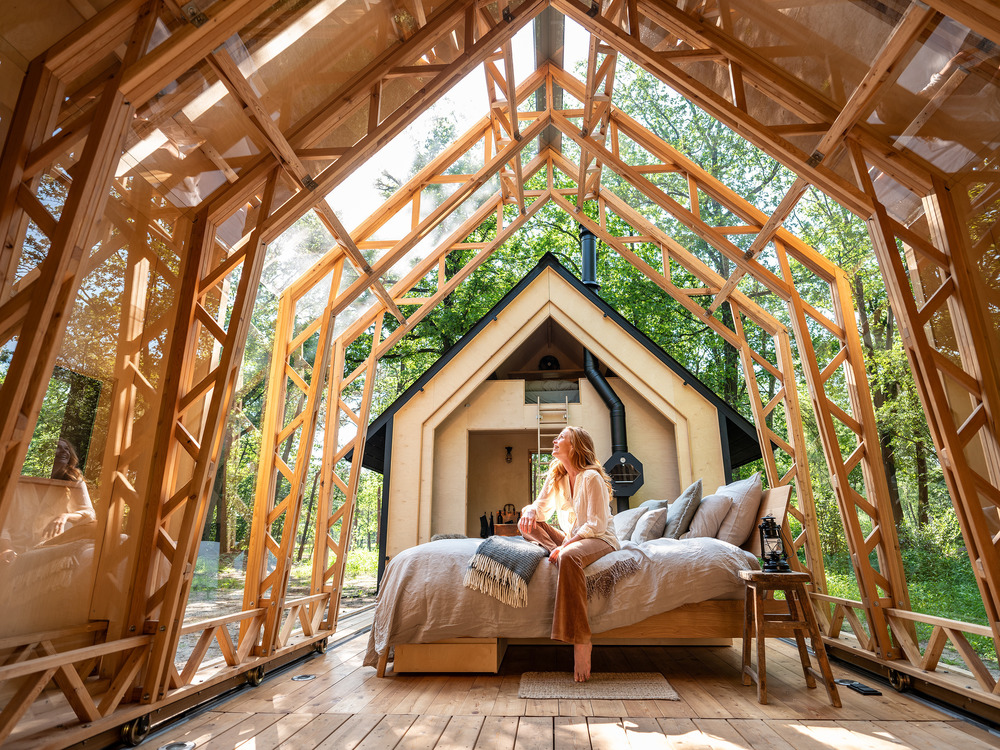
The idea of ANNA Stay is derived from a desire to live with nature’s elements, rather than shielding them off. “It’s primarily about being outside, and about creating a dynamic interaction between yourself, cabin ANNA as your home, and nature,” explains Schols.
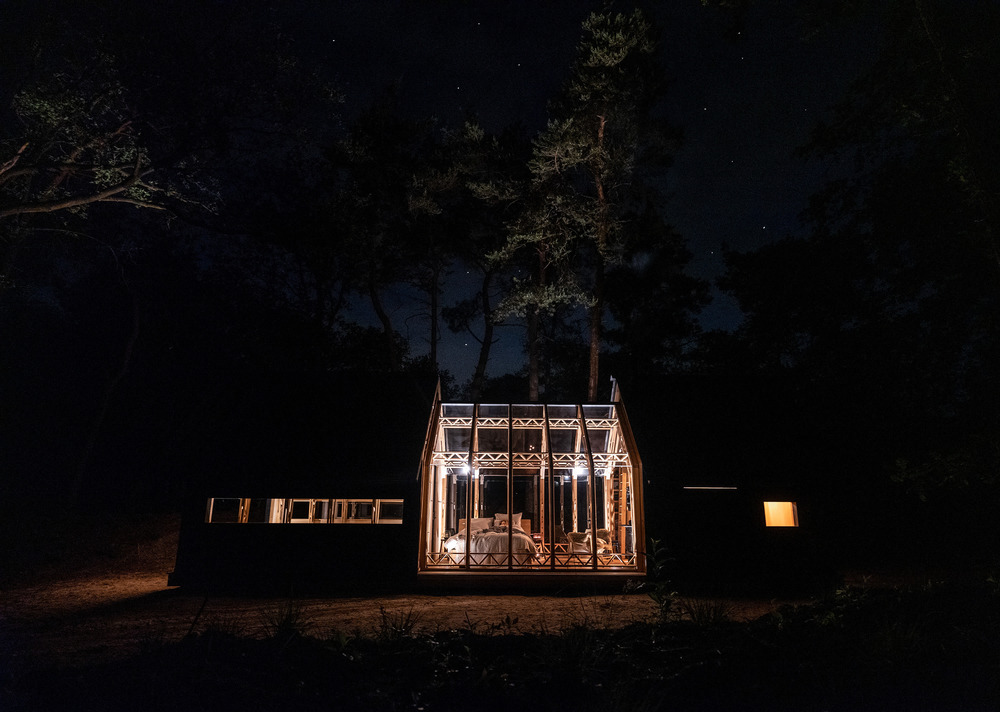
The cabin has two different “shells” as outer walls, supported on rails. The inner wall, consisting of a framework of wood and glass, is separated from the roofed, wooden outer wall. By shifting the shells and the glass framework, different setups are possible. “Just as you adjust your clothes to suit the weather, your mood, or the occasion,” Schols continues.
ANNA Stay derives its stability from a unique structure that has its origin in buildings such as railway stations, which rely only on the side walls for structural integrity. That’s where the beautifully crafted wooden trusses come from.
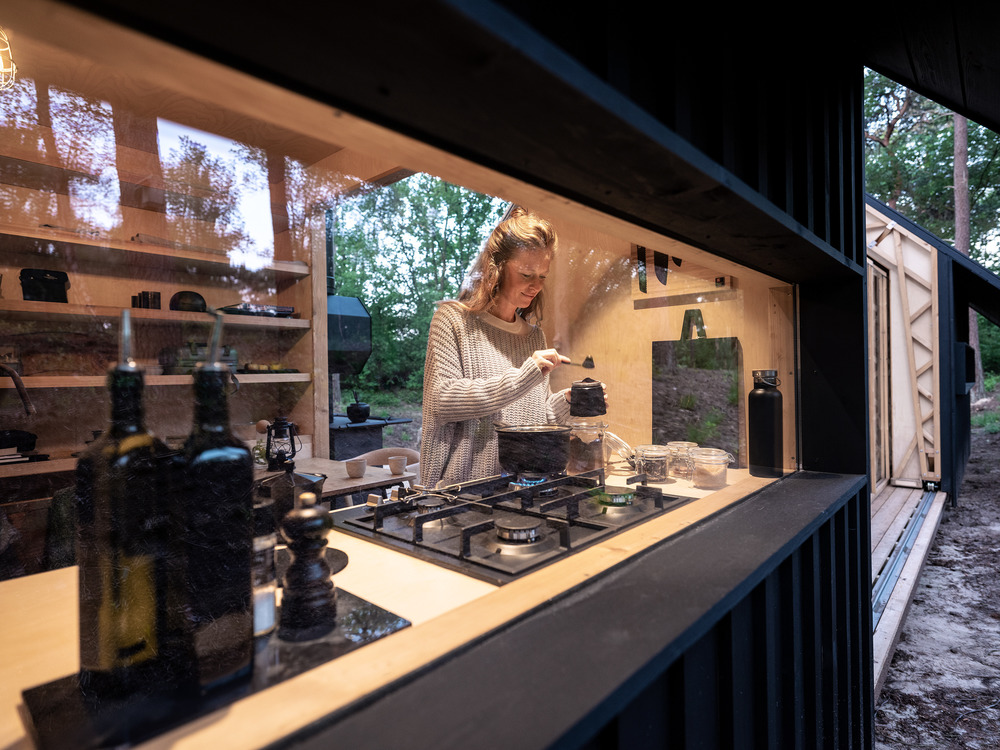
Back in 2016, when Schols began to work on this project in 2016 after his mother asked him to design a cabin, he wasn’t yet a trained architect. He envisioned it as a flexible space where she could read or paint, organise family dinners, and where her grandchildren could visit and put on theatre performances. The original design has been further developed in ANNA Stay, aimed at short- or long-term occupancy

Schols who held a master’s degree in physics from the University of Amsterdam, enrolled for a programme at the Gerrit Rietveld Academy of Arts, and further developed an interest in architecture. After he designed Cabin ANNA in 2016, publicity surrounding the garden house led to a number of award nominations, including the Dirk Roosenburg award (Eindhoven), Radical Innovation Awards (New York), and the Dezeen small building of the year award (London). It went on to become the top three most popular architectural projects of 2017 in the Netherlands. Around that same time, he was awarded a scholarship to study at the Architectural Association in London (2016- 2019).
The outside of the cabin is made of sustainable Siberian larch wood, while on the inside, birch plywood has been used for high quality and its light colour. Most wood is left untreated and saw dust is used for insulation. The two layers are carried by eight industrial wheels, supported on rails.
ANNA Stay comes with an indoor bathroom with shower and toilet, a fully furnished kitchen and plenty of storage space. A bathtub is also integrated in the floor area. ANNA provides room for up to two king-size beds. ANNA Stay can be equipped with a central heating installation. The cabin is also available in a self-sufficient off-grid version including a fire heated boiler, a solar energy system and water waste treatment system.
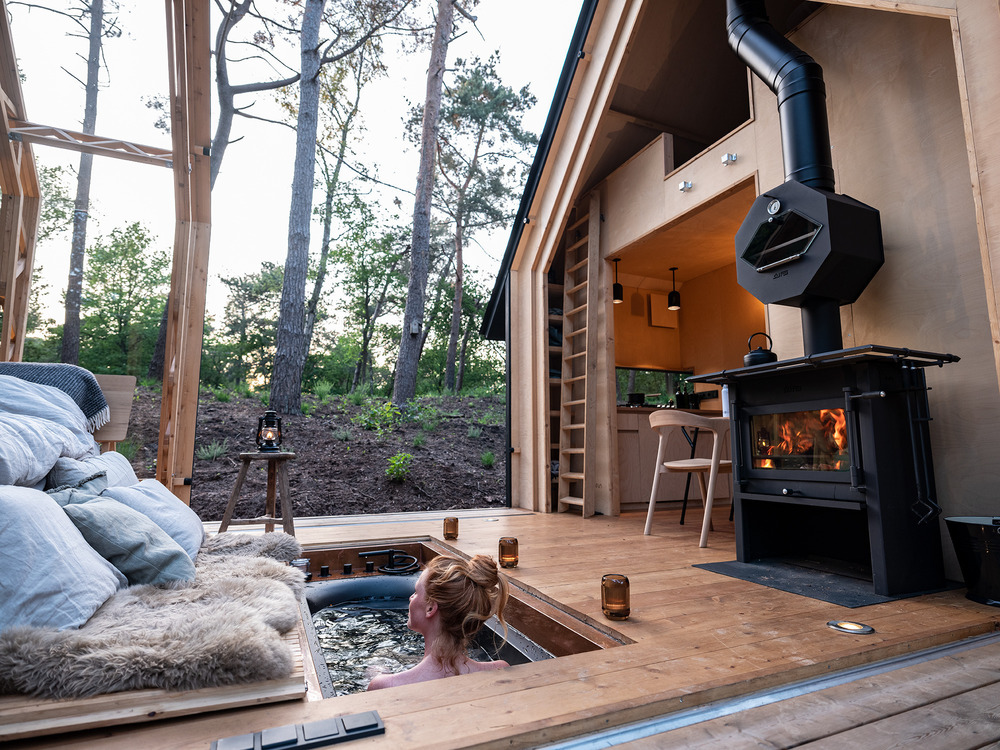
The cabin is manufactured to minimise time on-site. The entire structure can be remounted and relocated any time, making it quick and easy to be assembled at any location in the world, especially in secluded areas. The cabin is surprisingly light, eliminating the need a foundation, although some soil types may require a screw foundation.
Photos: Tõnu Tunnel and Jorrit ‘t Hoen
You might also like:
An architect transforms a caretaker’s hut into a low footprint holiday home in the Sri Lankan hills
Tent-shaped wooden house in forest by Hiroshi Nakamura & Nap harks back to ancient Japanese living

